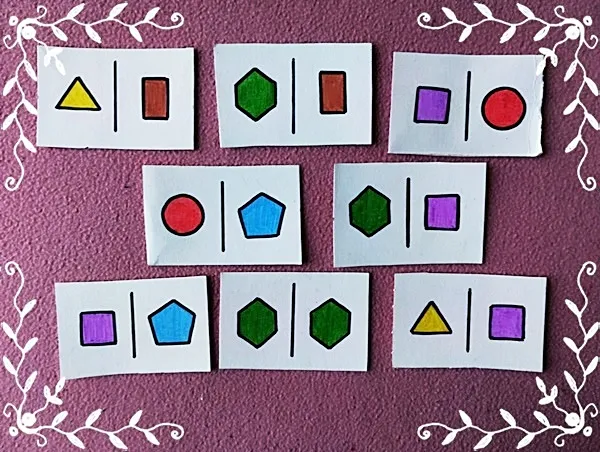
Saludos, estimada comunidad. Hoy les traigo un juego didáctico inspirado en el dominó, pero en lugar de puntos utilicé figuras geométricas. Con esta actividad, el niño podrá reconocer círculos, cuadrados, pentágonos, hexágonos, rectángulos y triángulos. A través de ellos podrá tener conexiones con su entorno e identificar estas formas en la realidad. También sirve para reforzar los colores, ya que cada forma estará representada en un tono en específico.
Les voy a mostrar los materiales que utilicé y el paso a paso. Vale mencionar que busqué en casa para contribuir al reciclaje.
Greetings, dear community. Today I bring you a didactic game inspired by dominoes, but instead of dots I used geometric figures. With this activity, the child will be able to recognize circles, squares, pentagons, hexagons, rectangles and triangles. Through them he will be able to have connections with his environment and identify these shapes in reality. It also serves to reinforce the colors, since each shape will be represented in a specific tone.
I am going to show you the materials I used and the step by step. It is worth mentioning that I searched at home to contribute to recycling.
Materiales e instrumentos:
- Caja
- Colores
- Regla
- Tijera
- Marcador
- Lápiz
Materials and instruments:
- Box
- Colors
- Ruler
- Scissors
- Marker
- Pencil
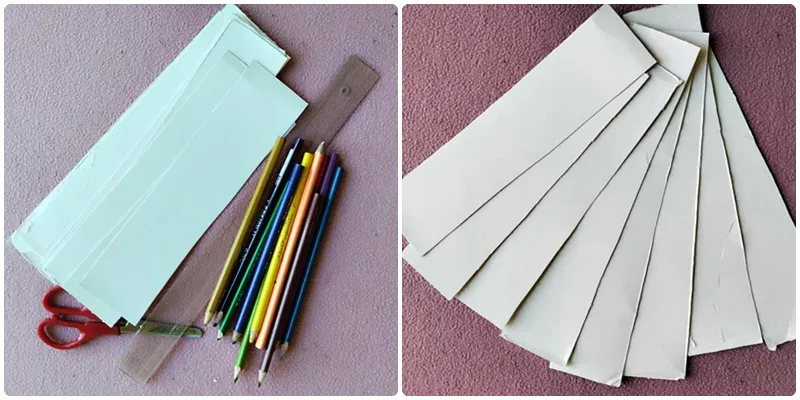
Lo primero que hice fue dividir las caras de una caja para sacar varias tiras de 7 cm de ancho por 24 cm de largo. Luego, las seccioné en diferentes tarjetas, estas serían las piezas del dominó. De cada cinta saldrían tres fichas.
The first thing I did was to divide the sides of a box to get several strips of 7 cm wide by 24 cm long. Then, I sectioned them into different cards, these would be the domino pieces. Three dominoes would come out of each strip.
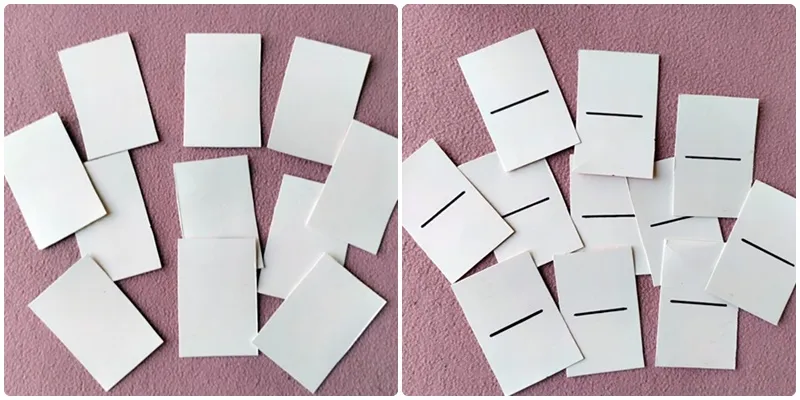
Ubiqué el centro y con la ayuda de la regla hice una línea divisoria para que me quedaran dos lados iguales. Esto lo realicé con cada uno de los fragmentos.
I located the center and with the help of the ruler I made a dividing line so that I would have two equal sides. I did this with each of the fragments.
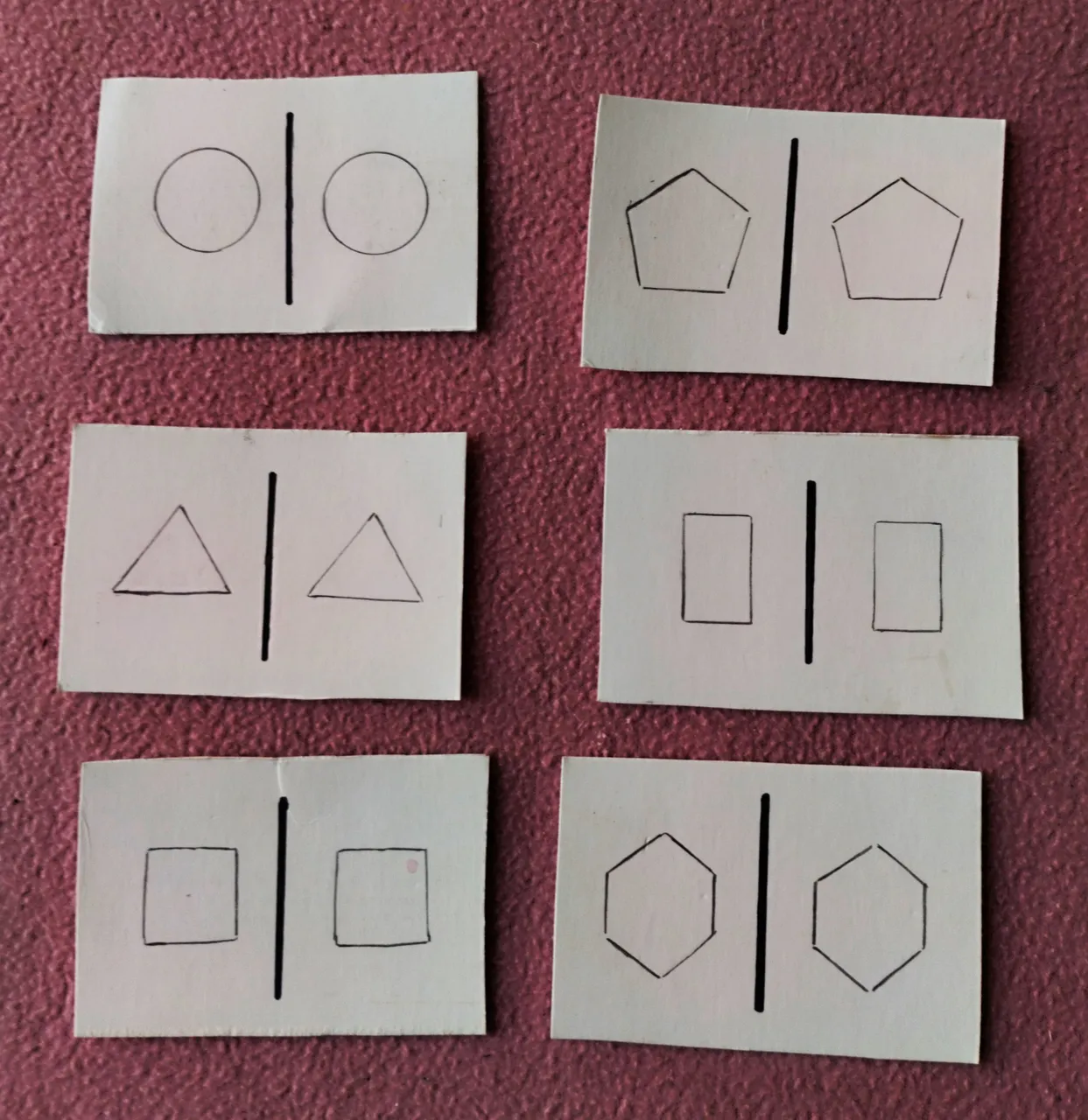
Posteriormente, marqué el doble de cada figura geométrica (círculo, cuadrado, pentágono, hexágono, rectángulo y triángulo). Elegí estas por ser las más sencillas, también se pudieran elegir otras de mayor complejidad si el niño ya domina estas formas.
Afterwards, I marked the double of each geometric figure (circle, square, pentagon, hexagon, rectangle and triangle). I chose these as the simplest ones, but others of greater complexity could also be chosen if the child has already mastered these shapes.
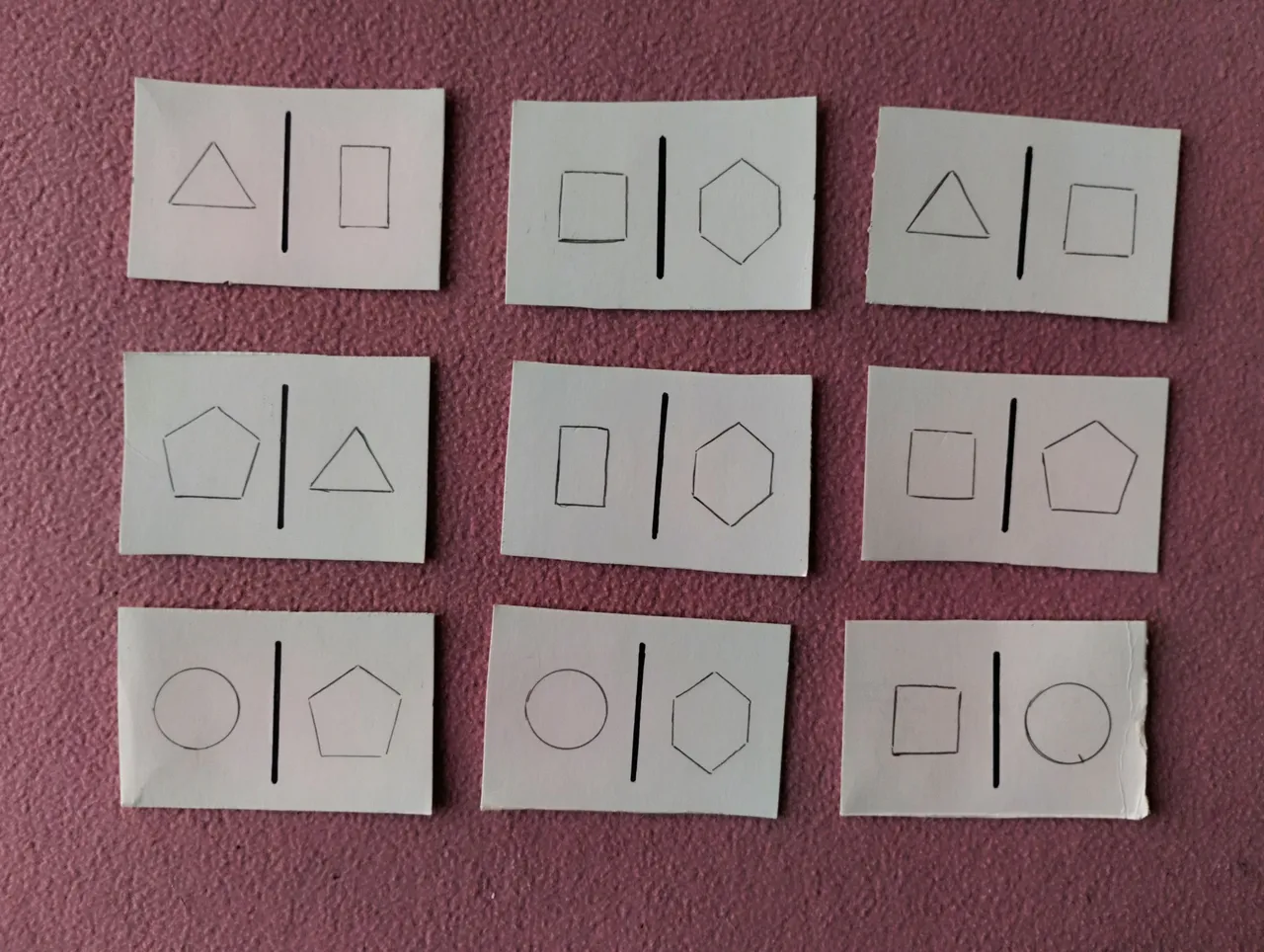
Ahora viene el proceso de combinación, se harán tantas piezas como sean posibles según las figuras seleccionadas.
Now comes the combination process, as many pieces as possible will be made according to the selected figures.
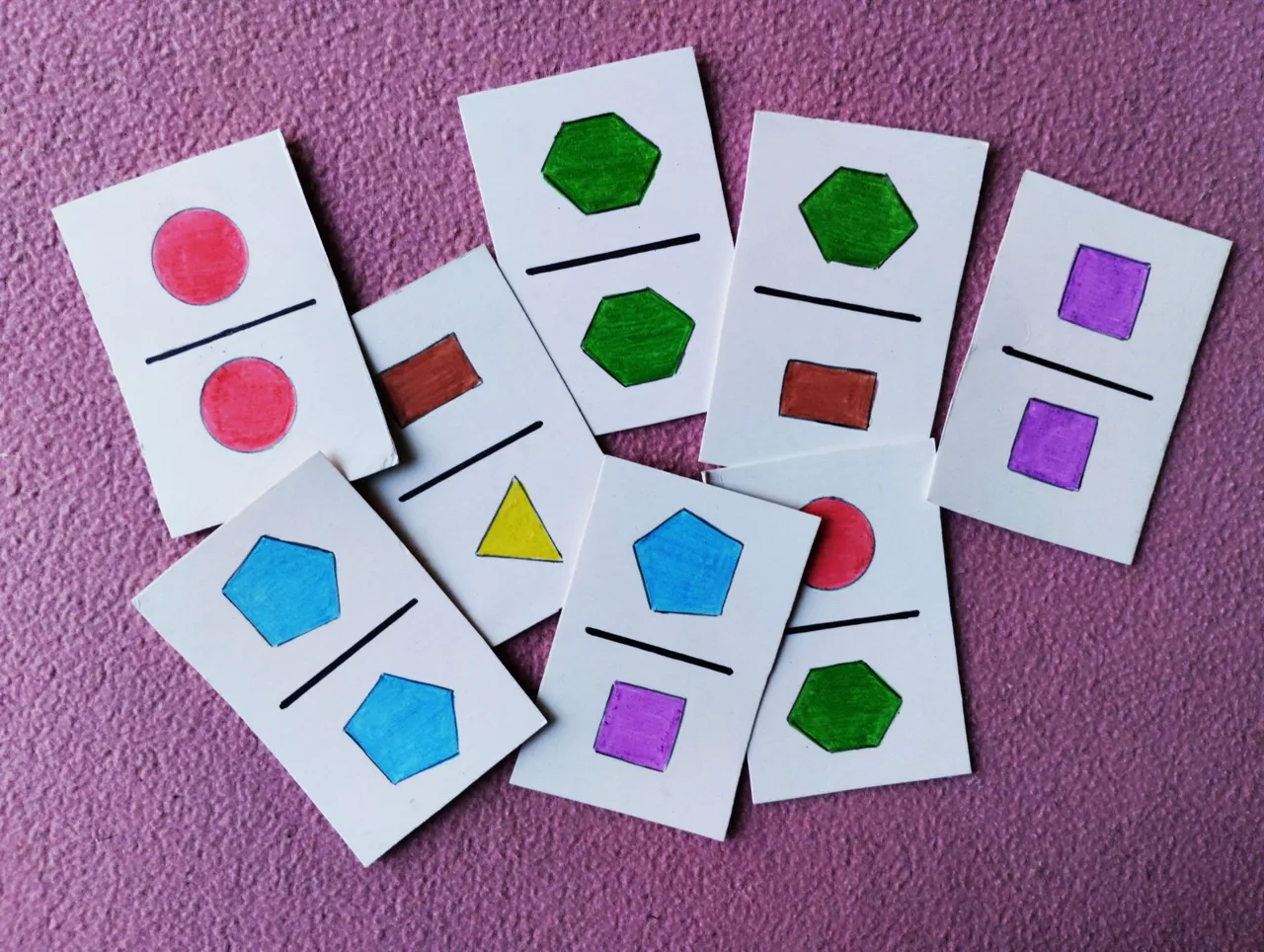
Luego, le di color a las figuras. El triángulo de amarillo, el cuadrado de morado, el pentágono de azul, el rectángulo de marrón, el hexágono de verde y el círculo de rojo.
Then, I colored the shapes. The triangle in yellow, the square in purple, the pentagon in blue, the rectangle in brown, the hexagon in green and the circle in red.
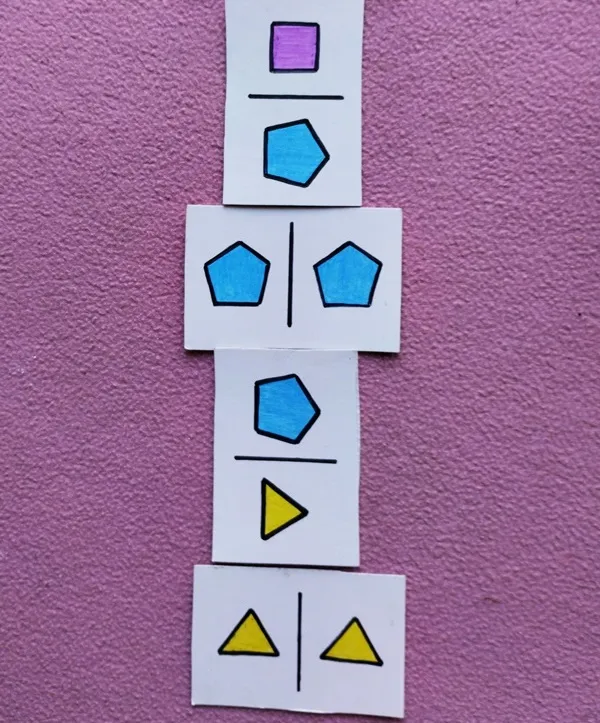
Al igual que en el dominó tradicional, si juegan dos, cada uno tendrá siete fichas escogidas al azar. Las demás piezas estarán boca abajo en una esquina. Cualquiera puede iniciar colocando la primera. Luego, el segundo jugador tratará de unir la figura a un extremo y así proseguirá la dinámica. Si no tiene de esa pinta, puede cargar hasta que le salga la que necesita. En caso de no haber fichas disponibles (porque están jugando cuatro personas o porque ya no hay para agarrar otra), pierde el turno y continúa el siguiente. Gana el jugador que quede sin fichas. Si el juego se tranca y no hay posibilidades de colocar más piezas, gana quien tengan menos tarjetas. Sin olvidar que la victoria es para todos porque están aprendiendo mientras se divierten.
Espero que este juego les haya sido de utilidad. Hasta una próxima oportunidad, amigos.
As in traditional dominoes, if two players play, each will have seven randomly chosen dominoes. The remaining pieces will be face down in a corner. Either player can start by placing the first one. Then, the second player will try to attach the figure to one end and the game will continue. If you don't have the right one, you can load until you get the one you need. If there are no chips available (because four people are playing or because there are no more chips to take), the player loses the turn and the next player continues. The player who runs out of tiles wins. If the game becomes deadlocked and there is no possibility of placing more pieces, the player with the fewest cards wins. Without forgetting that victory is for everyone because they are learning while having fun.
I hope you found this game useful. Until next time, friends.
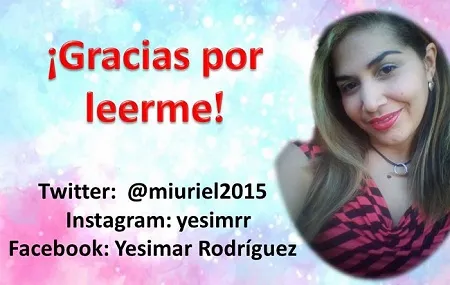
Las fotos son de mi archivo personal.
The photos are from my personal archive.
